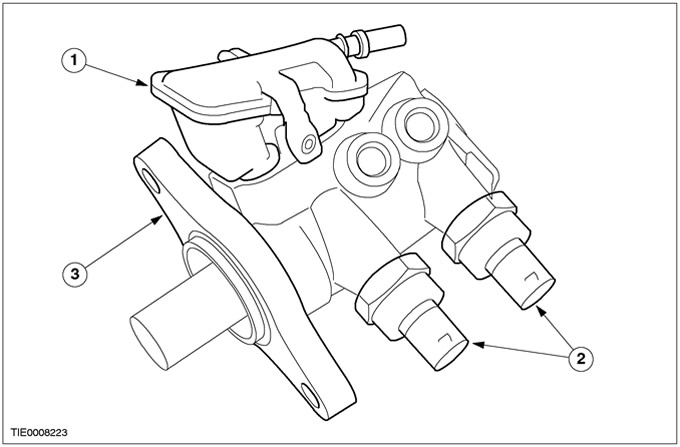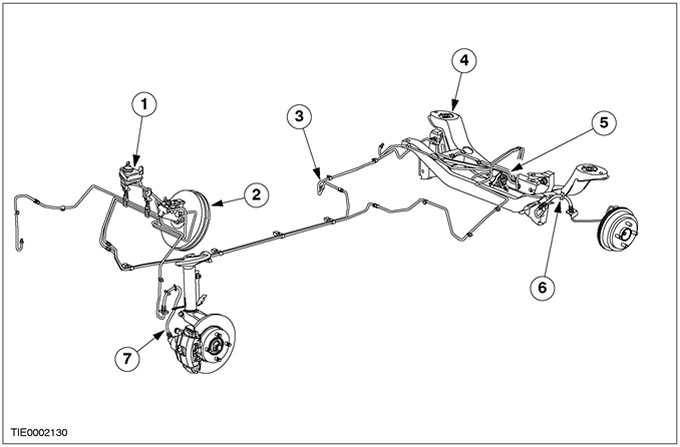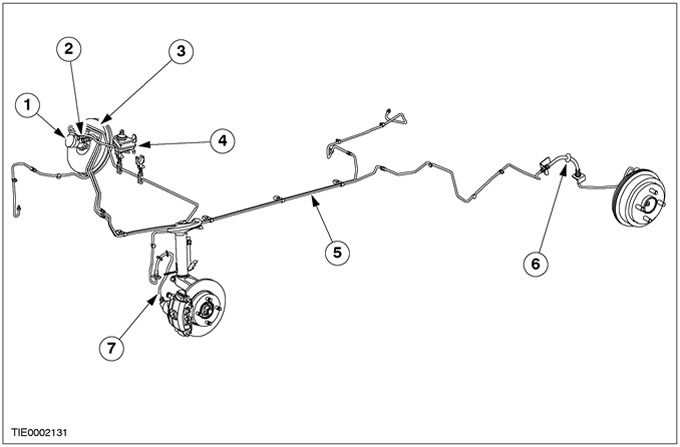WARNING: Brake fluid contains polyglycerol esters and polyglycerol. Avoid contact with eyes. Wash your hands thoroughly after handling brake fluid. If brake fluid gets into your eyes, rinse your eyes for 15 minutes with cold running water. If irritation persists, seek medical attention. If brake fluid is swallowed, drink water and induce vomiting. Seek immediate medical attention. Failure to follow these instructions may result in injury.
The dual-circuit hydraulic brake system has a traditional design and is activated by the pedal.
The system includes the following elements:
- hydraulic brake reservoir with brake fluid level indicator
- brake lines and hoses
- master brake cylinder
- brake circuits with diagonal separation (left front and right rear and right front and left rear wheel)
Pressure Sensitive Pressure Reducing Valves (PCRV). The PCRV valves are installed between the brake master cylinder and the brake lines to the rear wheels. PCRV valves control hydraulic pressure to the rear brakes, thereby reducing the risk of rear wheel lockup when braking.
Pressure Sensors
Pressure sensors are installed on vehicles that have the function of maintaining stability on the course. Pressure sensors detect the driver's intention to apply the brake system (braking with yaw control active).

| Pos. | Spare Part No | Name |
| 1 | Hydraulic brake reservoir | |
| 2 | Pressure Sensors (vehicles with a course stability function) | |
| 3 | Master brake cylinder |
Left hand drive

| Pos. | Spare Part No | Name |
| 1 | Hydraulic brake reservoir | |
| 2 | Vacuum brake booster | |
| 3 | Hydraulic pipelines of the brake system | |
| 4 | crossbar ("station wagon") | |
| 5 | Load sensing control valve ("station wagon") | |
| 6 | Rear brake hose | |
| 7 | Front brake hose |
Right hand drive

| Pos. | Spare Part No | Name |
| 1 | Master brake cylinder | |
| 2 | Pressure Sensitive Pressure Reducing Valve | |
| 3 | Vacuum brake booster | |
| 4 | Hydraulic brake reservoir | |
| 5 | Hydraulic pipelines of the brake system | |
| 6 | Rear brake hose | |
| 7 | Front brake hose |
Visitor comments